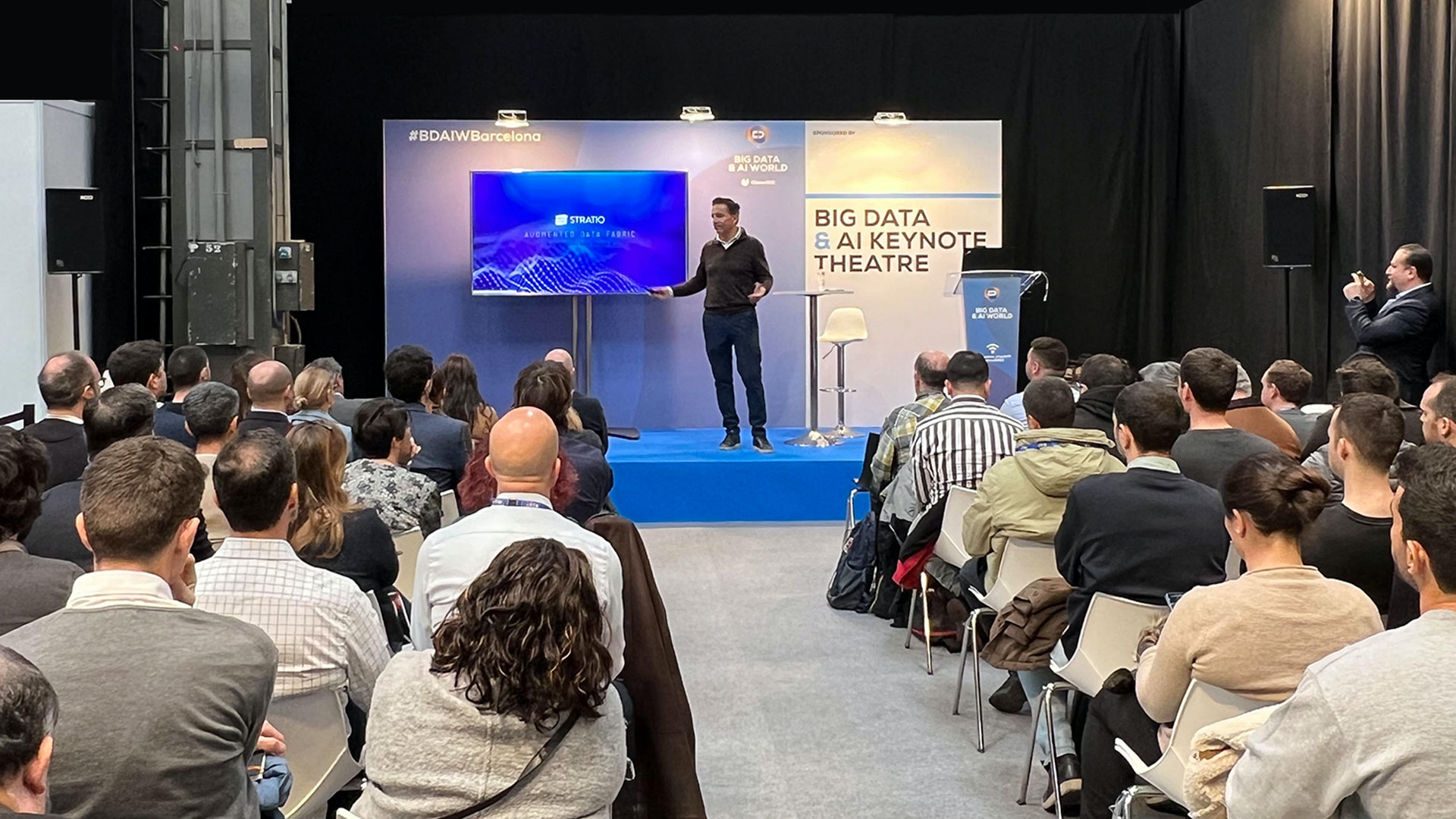Oscar Méndez, CEO of Stratio spoke at the recent Big Data & AI conference in Barcelona on Current data trends: the union between Data Fabric, Artificial Intelligence and Metaverse. With standing room only in the auditorium, Oscar shared a realistic vision of what the future holds and gave the key to making the Metaverse mainstream.
We, at Stratio, know that companies are not getting all the value that their data can offer. Through big data lakes, data warehouses or public clouds businesses are getting a very small percentage of their data to use in the reporting or make decisions with. In addition, any data manipulation is time-consuming and has a high associated cost, being a process that does not allow for innovation or creativity, accompanied by no real time data and requiring a lot of human effort.
The only way to get the most value out of data is through Data Mesh and Data Fabric, as recommended by Gartner and Forrester, and verified via Gartner Peer Reviews by Stratio’s international customers.
What is Data Fabric? As Oscar describes it, data fabric is a revolution in data management – it allows for the creation of a unified data layer in an automatic way, where data has built-in quality, security and business meaning, and is available in real-time.
“With Stratio Generative AI Data Fabric, any data use case you want to solve within a company; reporting, monitoring, application AI, is solved 4 times faster and with half of the associated cost.”
Several very important elements that need to be highlighted in relation to data fabric. Firstly, automation. In Stratio Generative AI Data Fabric the center of gravity of data systems shifts from data storage to data governance.
With the above, and thanks to the data catalog and the virtualizer, companies can manage and access all their data automatically, without workflows or human effort, 4 to 6 times faster and with lower cost.
Another important point is that data fabric gives companies an ability to easily translate technical schemas into business terms, thus giving the technical data business meaning. This can be achieved thanks to the algorithms and Artificial Intelligence that Data Fabric offers. In this way, data becomes consumable, understandable to business users, and unified, which helps create reports with higher quality and in a more secure way.
So why are Data Fabric, ontologies and AI so relevant to the Metaverse?
As Oscar points out, the Metaverse is the evolution of the Internet as we know it; a virtual immersive space where users can interact with objects, people and companies in a new way. However, the technology does not yet allow it to be used as envisioned because we need 1,000 times more technological capacity than we have now.
But how close are we to making it a reality?
“In the next five to ten years metaverse will firmly be part of our lives and business opportunities because today we are investing in the metaverse 10 times more than in the ‘space race’ combined.” – predicts and concludes Oscar
But for metaverse to be a meaningful place to be, businesses will need to pass their data to a layer where it is mapped to the metaverse-specific ontology in order to make it interoperable between any metaverse and users. And only data fabric currently enables this.
* You can also watch Oscar’s full keynote video here
About Big Data and AI conference, Barcelona
Stratio was a proud sponsor and speaker at the E-Show, eCommerce, Digital Marketing and Big Data & AI (BDAIW) conference which took place in Barcelona on March 7-8, 2023.
The figures exceeded expectations with more than 130 exhibitors, 120 speakers and an attendance capacity of over 8,000 people.
In the Big Data & AI area, Stratio’s stand stood out with its complete and innovative solution Stratio Generative AI Data Fabric.
Opportunities to meet with Stratio at the industry events:
April 29, 2023 Paris Accélerer vos stratégies data-driven en 2023
June 13-15, 2023 Malaga Digital Enterprise Show
20-21 September, 2023 London Big Data LDN
25-26 September, Paris Big Data & AI
Contact us to speak about your data integration needs and for opportunities to meet.
